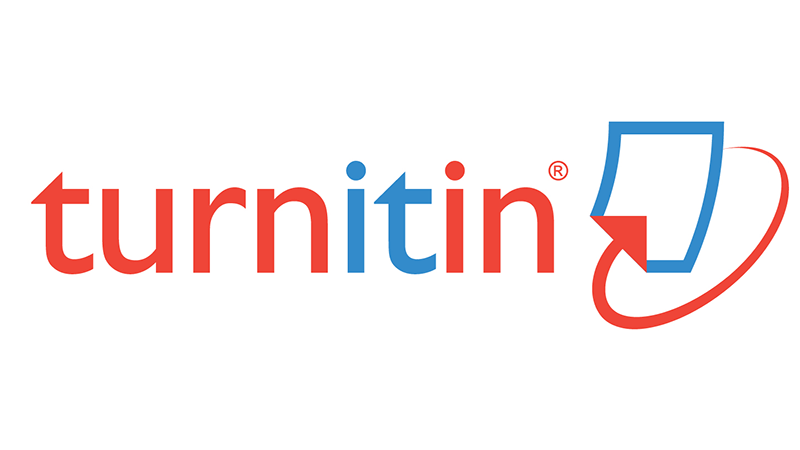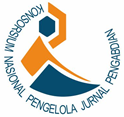PENTINGNYA DIGITAL MARKETING SEBAGAI STRATEGI PEMASARAN UMKM DI ERA 4.0
Abstract
Abstrak: Usaha Menengah, Kecil, dan Mikro (UMKM) yang berdiri di Desa Gedog Wetan, Kecamatan Turen, Kabupaten Malang sebagai pilar penting yang menjadi penyangga perekonomian bagi masyarakat Desa Gedog Wetan. Hal ini ditandai dengan rata-rata mata pencaharian masyarakat sebagai pelaku industri, yaitu industri tahu, industri sangkar burung, dan industri pandai besi. Dalam pelaksanaannya, pelaku industri di Desa Gedog Wetan masih menggunakan cara-cara konvensional dalam upaya pemasaran produk di mana hasil produksi akan dijual kepada pengepul yang sudah menjadi konsumen tetapnya. Berdasarkan hasil observasi, pelaku usaha tersebut mengaku masih kesulitan dalam memanfaatkan kemajuan teknologi informasi saat ini, sehingga sasaran pasar mereka masih sangat terbatas. Kegiatan ini menggunakan metode pendekatan yaitu dengan melakukan observasi kepada pelaku usaha untuk melihat kendala yang mereka hadapi secara langsung. Dilanjutkan dengan metode pengarahan melalui pemaparan materi melalui sosialisasi guna memperdalam strategi-strategi yang dapat pelaku industri lakukan untuk lebih memperluas pangsa pasar. Hasil dari pemaparan materi ini menunjukkan bahwa untuk memperluas pasar produksi sebaiknya memanfaatkan perkembangan teknologi saat ini sehingga lebih memaksimalkan income usaha. Selain itu, dalam usaha pemasaran hendaklah menonjolkan suatu hal yang menjadi ciri khas dari produk yang diciptakan sehingga mampu bersaing dengan pangsa pasar luas.
Abstract: Medium, Small, and Micro Enterprises (MSMEs) are established in Gedog Wetan Village, Turen District, Malang Regency as an important pillar that supports the economy for the people of Gedog Wetan Village. This is indicated by the average livelihood of the community as industry players, namely the tofu industry, bird cage industry, and blacksmith industry. In practice, industrial players in Gedog Wetan Village still use conventional methods in product marketing efforts where the products will be sold to collectors who have become permanent consumers. Based on the results of observations, these business actors admit that they are still having difficulties in utilizing current advances in information technology, so that their target market is still very limited. This activity uses an approach method, namely by observing business actors to see the obstacles they face directly. Followed by the method of direction through the presentation of material through socialization in order to deepen the strategies that industry players can do to further expand market share. The results of the presentation of this material indicate that in order to expand the production market, it is better to take advantage of current technological developments so as to maximize business income. In addition, the marketing effort should highlight something that is the hallmark of the product created so that it can compete with a broad market share. Followed by the directive method through material presentation through socialization in order to deepen the strategies that industry players can do to further expand market share. The results of the presentation of this material indicate that in order to expand the production market, it is better to take advantage of current technological developments so as to maximize business income. In addition, the marketing effort should highlight something that is characteristic of the product created so that it can compete with a broad market share. Followed by the directive method through material presentation through socialization in order to deepen the strategies that industry players can do to further expand market share. The results of the presentation of this material indicate that in order to expand the production market, it is better to take advantage of current technological developments so as to maximize business income. In addition, the marketing effort should highlight something that is characteristic of the product created so that it can compete with a broad market share.
Keywords
Full Text:
PDFReferences
Akhmad, K. A., & Purnomo, S. (2021). Pengaruh Penerapan Teknologi Informasi Pada Usaha Mikro Kecil Dan Menengah Di Kota Surakarta. Sebatik, 25(1), 234–240. https://doi.org/10.46984/sebatik.v25i1.1293
Alfrian, G. R., & Pitaloka, E. (2020). Strategi Usaha Mikro, Kecil, dan Menengah (UMKM) Bertahan pada Kondisi Pandemik Covid 19 di Indonesia. Seminar Nasional Terapan Riset Inovatif (SENTRINOVE), 6(2), 139–146. https://proceeding.isas.or.id/index.php/sentrinov/article/view/434
Amri, A. (2020). Pengaruh periklanan melalui media sosial terhadap UMKM di Indonesia di masa pandemi. Jurnal Brand, 2(1), 123–130. https://ejournals.umma.ac.id/index.php/brand
Fadhilah, D. A., & Pratiwi, T. (2021). Strategi Pemasaran Produk UMKM Melalui Penerapan Digital Marketing Studi Kasus Usaha Kremes Desa Cibunar Kecamatan Rancakalong. Coopetition : Jurnal Ilmiah Manajemen, 12(1), 17–22. https://doi.org/https://doi.org/10.32670/coopetition.v12i1.279
Hendriadi, A. A., Sari, B. N., & Padilah, T. N. (2019). Pelatihan Digital Marketing Usaha Mikro, Kecil dan Menengah (UMKM) di Kabupaten Karawang. J-Dinamika : Jurnal Pengabdian Masyarakat, 4(2), 120–125. https://doi.org/10.25047/j-dinamika.v4i2.1133
Idah, Y. M., & Pinilih, M. (2019). Strategi Pengembangan Digitalisasi UMKM. Prosiding Seminar Nasional Dan Call for Papers “Pengembangan Sumber Daya Pedesaan Dan Kearifan Lokal Berkelanjutan IX,” 9(1), 195–204. http://jurnal.lppm.unsoed.ac.id/ojs/index.php/Prosiding/article/view/1212
Irfani, H., Yeni, F., & Wahyuni, R. (2020). Pemanfaatan Digital Marketing Sebagai Strategi Pemasaran Pada Ukm Dalam Menghadapi Era Industri 4.0. JCES (Journal of Character Education Society), 3(3), 651–659.
Kustanto, A. (2022). USAHA MIKRO KECIL MENENGAH (UMKM) sebagai : PILAR EKONOMI KERAKYATAN dalam DIMENSI POLITIK HUKUM INTEGRATIF. Jurnal Ilmu Hukum QISTIE, 15(1), 17–31. https://doi.org/10.31942/jqi
Nalini, S. N. L. (2021). Dampak Dampak covid-19 terhadap Usaha MIkro, Kecil dan Menengah. Jesya (Jurnal Ekonomi & Ekonomi Syariah), 4(1), 662–669. https://doi.org/10.36778/jesya.v4i1.278
Pradiani, T. (2018). Pengaruh Sistem Pemasaran Digital Marketing Terhadap Peningkatan Volume Penjualan Hasil Industri Rumahan. Jurnal Ilmiah Bisnis Dan Ekonomi Asia, 11(2), 46–53. https://doi.org/10.32812/jibeka.v11i2.45
Sopanah, Anam, C., & Paramita, N. (2021). Peran Penting Pelatihan Digital Marketing dan Manajerial bagi UMKM Olahan Makanan Kecamatan Lowokwaru Malang. The 4th Conference on Innovation and Application of Science and Technology (CIASTECH 2021), 1(1), 939–944.
Susanto, B., Hadianto, A., Chariri, F. N., Rochman, M., Syaukani, M. M., & Daniswara, A. A. (2020). Penggunaan Digital Marketing untuk Memperluas Pasar dan Meningkatkan Daya Saing UMKM. Community Empowerment, 6(1), 42–47. https://doi.org/10.31603/ce.4244
Thaha, A. F. (2020). Dampak Covid-19 Terhadap UMKM di Indonesia. Jurnal Lentera Bisnis, 2(1), 147–153.
Utami, B. S. A. (2021). Dampak Pandemi Covid 19 Terhadap Sektor UMKM di Indonesia. Journal Universitas Wijaya Kusuma Surabaya, 03(1), 1–7.
Wardhana, A. (2015). Strategi Digital Marketing dan Implikasinya Pada Keunggulan Bersaing UMK di Indonesia. In Seminar Nasional Keuangan Dan Bisnis IV, April 2015, 327–337.
Wastutiningsih, S. P., & Dewi, T. P. (2019). Pemberdayaan Masyarakat Berbasis Pengembangan Usaha Mikro, Kecil, dan Menengah di Era Revolusi Industri 4.0. Suluh Pembangunan : Journal of Extension and Development, 1(2), 90–96. https://doi.org/10.23960/jsp.v1i2.20
DOI: http://dx.doi.org/10.17977/um078v4i22022p154-162
Refbacks
- There are currently no refbacks.
Email: jgp@um.ac.id
View JGP's Stats
This work is licensed under a Creative Commons Attribution-NoDerivatives 4.0 International License.
Index by:
 Jurnal Graha Pengabdian
Jurnal Graha Pengabdian






